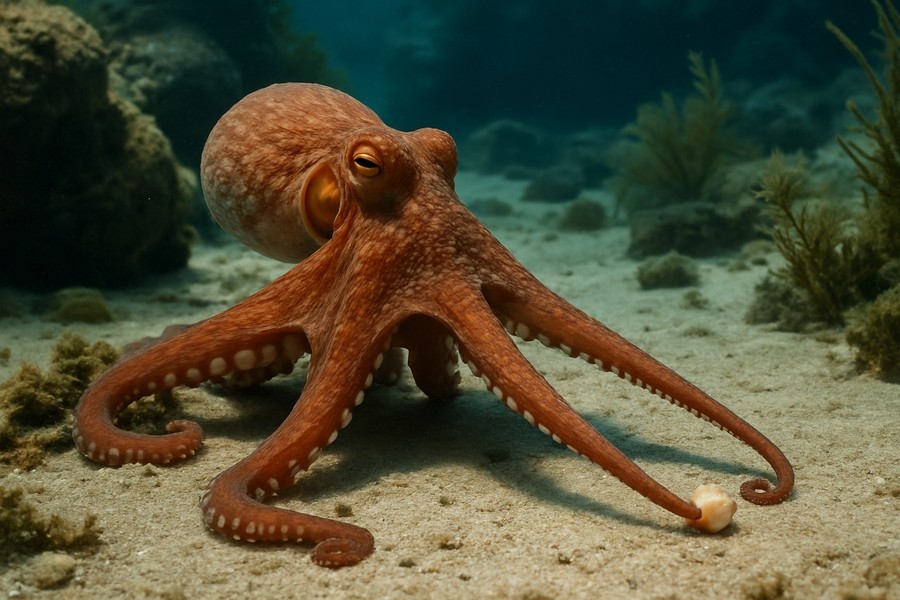
Octopuses Have Preferred Limbs for Certain Tasks, Research Shows
Many of us have experienced the awkward feeling of having two left feet on the dance floor. In contrast, octopuses have to synchronize their eight highly flexible arms to accomplish a variety of behaviors. This includes activities such as hunting for food, constructing dens, and navigating the ocean floor.
Recent research has revealed fascinating insights into the world of these remarkable creatures. The study found out that, similar to primates, rodents, and fish, octopuses also have preferences when it comes to using their limbs for specific tasks.
Front Arms vs Back Arms
The study's co-author, Kendra Buresch, noticed that octopuses generally use their front arms more frequently for most actions compared to their back arms. However, she observed that there are exceptions to this rule.
The research was completed by analyzing 25 one-minute video clips of 25 wild octopuses belonging to three different species. These clips were recorded from 2007 to 2015 across six different locations, each showcasing a unique habitat, from Spain to the Cayman Islands.
Understanding Octopus Behavior
In each video clip, the researchers categorized the behavior of the octopus, such as retrieving an object or walking. They then classified the arm movements involved – such as curling the limb or extending it away from the body.
The team also examined the four different ways an octopus arm can change shape – shortening, lengthening, bending and twisting – and which of these were involved in each action.
Overall, the researchers identified 15 unique octopus behaviors and 12 distinct arm actions. Some behaviors, like crawling or launching a 'parachute attack', required more arm actions compared to others, like swimming backwards.
Octopus Multitasking
The study revealed that multiple arm actions could occur simultaneously on the same or neighboring arms, demonstrating that all eight arms were capable of performing all actions and deformations. This flexibility enables octopuses to adapt to various environments and tasks, as Buresch noted.
Interestingly, the research did not find a preference in the octopuses for using their right or left arms. However, the cephalopods did favor using their front arms over their back arms. When considering all 12 actions together, the front arms were used 61% of the time, compared to 39% for the rear arms.
Arm Preference in Detail
Upon closer examination, the team found that the creatures used their two front pairs of arms more often for reach, raise, lower, and curl actions. In contrast, the octopuses favored their rear two pairs of arms for stilt action – where the body sits upright on the arms – and for the roll action, where the arm moves like a conveyor belt. Both these actions are used in locomotion.
The research findings offer new understanding into how octopuses coordinate their eight flexible arms to perform complex behaviors and multitask. This knowledge could be beneficial not only for marine science but also for other fields.
Implications of the Study
The team suggested that these demonstrations of flexibility could provide valuable insights for ethologists, sensory ecologists, neuroscientists, and engineers designing soft robotic appendages.
